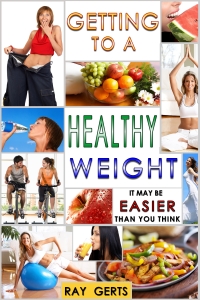This was originally a post on the WebMd site. They are correct about consuming less calories than you burn, but it's very hard to determine those two numbers. Anyway, there's more to it than just eat less calories. When you want to lose fat, a lot depends on the type of calories your eating. You gain the extra fat because of the bad calories your eating. Eating less bad calories won't help you lose weight if you're still eating bad calories. So as you read the post below, remember that to lose fat you have to eat healthy calories and not just calories.
Some calorie calculators help you find out how many calories you need to maintain your current weight. But what if you want to slim down? Then, what you really want to know is how many calories to lose weight?
It's an easy process to get the right number. Just follow three simple steps. Then, you'll know how many calories to eat each day and how many calories you need to burn for weight loss.
Step 1: Use a Weight Loss Calculator
To get the best weight loss numbers, you should use a calorie calculator or a simple weight loss calculator.
My favorite is the weight loss calculator at "Calorie Count". It's simple and easy to use.
Use the Calorie Count Calculator
The calculator will ask you a few questions about your activity habits and your goal weight in order to calculate the most accurate number. Be honest about your exercise and realistic about your weight. If you fudge the numbers, you won't get an accurate result. It sounds easy, right? The first thing you should know is that all calories aren't equal.
It sounds easy, right? The first thing you should know is that all calories aren't equal. Calories you get from eating protein burn the best. In other words, your body has to burn calories to keep the body functioning. Your body will burn about 30% protein, 30% fats, and 40% carbs. Every gram of protein burned generates 9 calories, a gram of carbs is only about 6 calories and fats is about 4 calories. As much research that been done on burning calories, science doesn't really understand why there's a big difference from one person to the next.
step 2: Find Out How Many Calories to Lose Weight
The calorie calculator will provide you with the number of calories you need each day to lose weight. You'll also find out how long it will take you to reach your goal weight if you eat that number of calories each day. And that's just a big guess, all they can do is use an average. It's up to you to come up with the number yourself and you can't do that until you stop eat the foods you eat now and stop drinking anything with calories. Start eating fresh, clean foods. If you don't understand what that means, google "fresh, clean foods".
Step 3: Reach Your Calorie Deficit
A calorie deficit is simply an energy shortfall. When you create a calorie deficit, you cut calories (or energy) and deprive your body of the fuel it needs to function. So your body burns stored fat for fuel, instead. How many calories do you need to cut for weight loss?
That's the wrong way to look at weight loss. It's not weight loss that you really want. You want to lose body fat. If you lose the extra fat, you will be thinner, slim and fit with more energy.
If you really want to lose your body fat than look for my e-books at the websites listed below. You'll get information on Healthy eating, exercise, and diet. Instead of spending hours on the internet reading dozens of posts, you can save time by picking up one of my e-books.
There are two e-books. “How Bad Do You Want To Lose Weight?” is available at all the online bookstores selling for $1.99. Go to any of the websites below and search the title to find my e-book. This book gives you all you need to lose weight without spending money on gym memberships, diet plans or meal plans. Look for my book. at Amazon.com, B&N.com, iBooks, Kobo.com, Scribd.com, or Gardner Books in the U.K.
My new e-book is available on Smashwords.com, just type “getting to a Healthy Weight” in the search box at the top of the home page.








